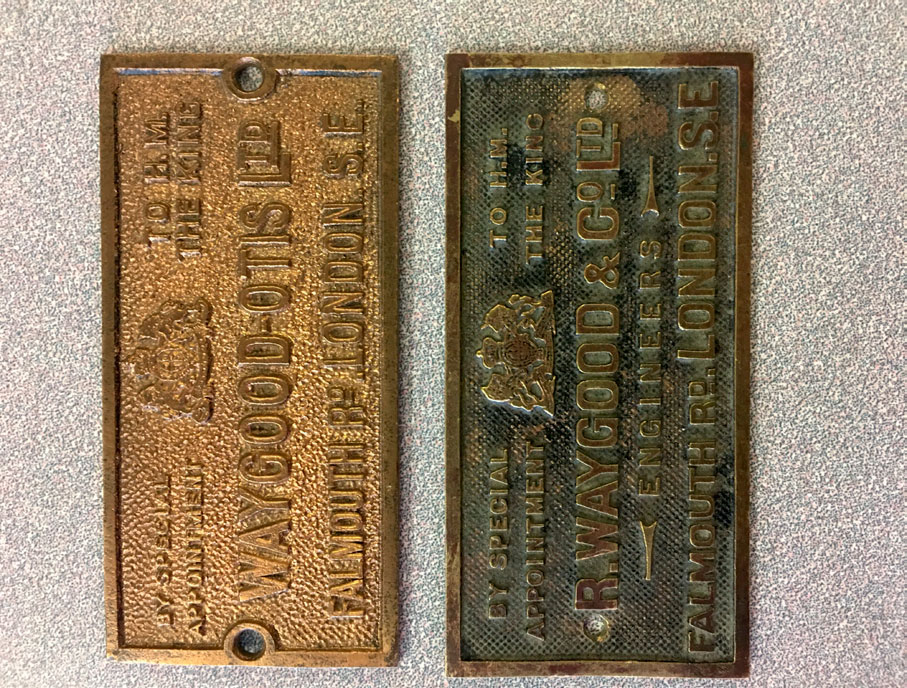Building R. Waygood and Otis Elevator Co. in the U.K.
Jun 1, 2021

Ambitious engineer made his mark in the early days of vertical transportation.
In 1833, Richard Waygood started his business in Beaminster in Dorset. Feeling that his native town did not offer sufficient scope for his ambitions and energy, he moved the business to London in 1842, occupying premises in Newington Causeway.
In 1863, with the help of his nephew William Robert Green, he began to build a factory on land in Roberts Place, Falmouth Road. At this time, the company was a general engineering works, manufacturing many different items, including water wheels and sawing machinery.
Soon after this, on 30 March 1865 – on his 15th birthday — Henry Claude Walker, the future chairman of Waygood-Otis, entered Richard Waygood’s service. It was in this year that Waygood started to first manufacture hand-powered lifts. Only three years later, in 1868, Henry C. Walker took the first order for a hydraulic lift, which was installed at Hobbs, Hart & Co. — Lock & Safe Manufacturers of London.
Richard Waygood withdrew from the management of the business in 1872 due to ill health and formed a partnership with three others. Newington Ironworks became Richard Waygood & Co. on 21 October 1872. The four partners were Richard Waygood, John Marsh Day, William Robert Green and Henry Claude Walker. Richard Waygood died on 5 October 1879, and was buried at Elmers End cemetery, Beckenham Kent.
In 1853, Elisha Graves Otis formed the Union Elevator Works, having invented the safety device to prevent elevators (lifts) from falling in the event of the rope(s) breaking. Following his death from diphtheria on 8 April 1861, his sons, Charles Rollin Otis and Norton Prentiss Otis, took over running the business and formed Otis Brothers & Co.
Many changes and innovations took place during this time, including moving away from steam power to hydraulic and then to electric power as electricity became more widely available.
In 1873, the company installed its first lifts in the U.K., at the Singer Sewing Machine factory in Glasgow. These were two freight elevators that were ordered from the Otis Yonkers factory.
The business grew over subsequent years, and, in 1898, Otis Brothers merged with several other elevator companies to form the Otis Elevator Co. The other companies included the Hale Elevator and Crane Elevator Cos. of Boston; Stokes & Parrish Elevator Co. and Morse, Williams & Co. of Philadelphia; Graves Elevator Co. of Rochester; and McAdams & Cartwright Elevator Co. of NYC.
In 1884, Otis Brothers established sales offices in London and Paris by purchasing the American Elevator Co., which had been organised by W.E. Hale, the Otis agent in Chicago. Then, in 1893, Otis Brothers changed the name of the American Elevator Co. to the Otis Elevator Co. Ltd. The London office in 1884 was at 38 Old Jewry, and the Paris office was at 20 Avenue de L ’opera (By 1891 the London office had relocated to 4 Queen Victoria Street). So, the Otis Elevator Co. Ltd. London was formed some five years before the merger of Otis Brothers and Hale Elevator, etc., in the U.S.
During the 1880s and 1890s, Henry Claude Walker travelled the world many times (no mean feat back then). He was not only working to expand the R. Waygood business across the British Empire (and other countries), but also met the Otis brothers (Charles & Norton) on numerous occasions during which the men shared ideas.
Henry Walker also met with William D. Baldwin during a visit to New York in 1889 and a friendship sprang up, resulting in both parties becoming more closely associated and, ultimately, led to a 1914 merger. At the time of their first meeting, William Baldwin was on the board of trustees at Otis Brothers, and, in 1898, when a merger of elevator companies took place to form the Otis Elevator Co., William Baldwin became president of the company. In his book Reminiscences of a Great Industry- Reminiscences of 70 Years in the Lift Industry, Henry Walker described William Baldwin as a man who had a charming personality and an extraordinary capacity for business. When Baldwin died on September 27 1930, aged 74, Henry Walker stated that he had lost a very staunch friend.
Due to the close ties of R. Waygood & Co. and Otis Elevator Co., the two companies attempted a merger in 1902, and the company name was changed from R. Waygood & Co. to Waygood & Otis Co Ltd. However, this merger lasted only a year, and, in 1903, the two businesses reverted back to trading separately. But, in 1914, a permanent merger was formed between the two companies (which, at the time, were geographically the largest lift/elevator companies). The name became Waygood-Otis Ltd., a name that lasted until 1957, when Otis Elevator Co. bought a controlling interest. In 1914, Henry Claude Walker was chairman and joint managing director of the newly formed Waygood-Otis Co., and William D. Baldwin was appointed vice chairman. D.W.R. Green was the other joint managing director, and the other board members were C. Clarke, R. Percy Sellon, H. Cecil Walker, R.H. Thorpe, H. Harmsworth and C.H.J. Day.
In 1934, upon finally retiring as chairman of Waygood-Otis, Henry Claude Walker wrote Reminiscences of a Great Industry. In it, he charts the history of the company in the U.K., and much of the information for this article has been obtained from his book.
When Henry Claude Walker died on 25 March 1939, his obituary in the newspapers referred to him as “The Father of the Lift Industry in England.”
Get more of Elevator World. Sign up for our free e-newsletter.








